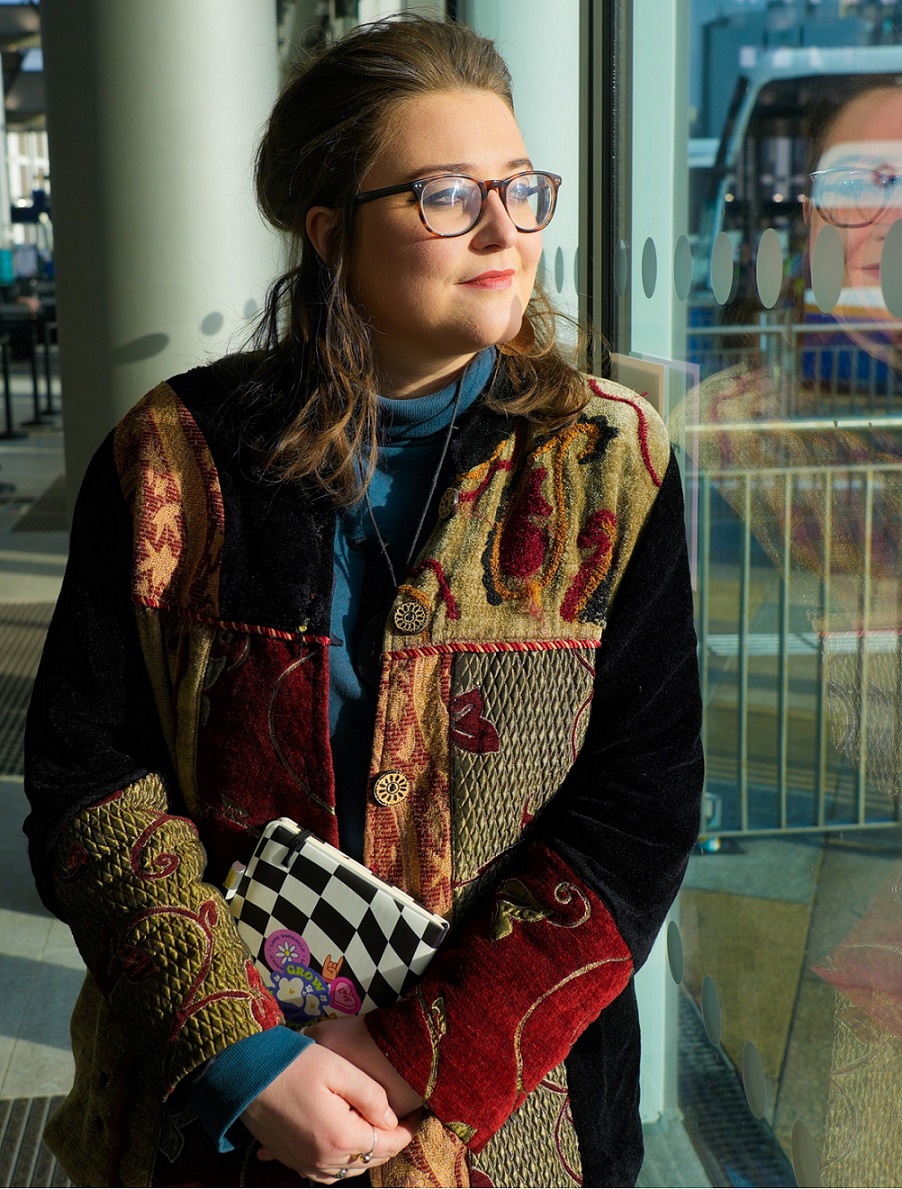Hey everyone! Welcome to my fifth in a series of travel blogs about the adventures I have gone on, as poet in residence at Belfast Grand Central Station and places you can travel to as well from the station.
Three visits to Enniskillen in one week—what a joy. All part of a writing project that brought me into the heart of Fermanagh, and each trip felt like a little story unfolding. The first time, I met a group of local writers in Blakes of the Hollow—a Victorian pub with stained glass, carved wood, and a quiet magic.
We gathered in the atrium out the back, writing about place, memory, and the way water holds stories. The pub’s named after William Blake, and honestly, it felt like he’d have loved it there. Enniskillen, this ‘Island Town’ nestled between Upper and Lower Lough Erne, is steeped in literature, history, and a kind of gentle vibrancy that’s hard to shake.
The main journey began on a bright spring morning. Hats, scarves, backpacks—me and my mate were layered up and ready. We set off from Belfast Grand Central Station, where I’m currently poet-in-residence, working on a poem that will hang in the station itself. It’s a place I’ve come to love—full of movement, stories, and quiet moments between journeys.
We set off from Stand 15 and caught the bus towards Dungannon, then switched onto the 261, which took us into the lakelands. Naturally, we grabbed the best spot — top deck, front seat. The views were stunning. The Goldliner carried us quietly onward, the road unfolding like a ribbon into the lakelands. Along the way, we chatted to a lovely couple. The woman was absolutely buzzing — it was her very first trip with her new SmartPass!
As Enniskillen came into view, the lakes shimmered, herons stood like sentinels, and boats drifted slowly past. We got off the bus, turned left past the back of St. Michael’s Church, and there they were—the turrets of Enniskillen Castle, rising just above the water. I rejoined the writing group and we explored the Fermanagh County Museum and The Inniskillings Museum. The Crannog exhibition was brilliant—those ancient lake dwellings feel like something out of a dream. The military history was fascinating too, especially the stories of The Royal Inniskilling Fusiliers and The 5th Royal Inniskilling Dragoon Guards.
One of the most moving parts for me was seeing paintings by T.P. Flanagan. He’s buried just five minutes from the museum, and was a close friend of Seamus Heaney. Heaney even dedicated ‘Bogland’ to him. That connection—between painter and poet—felt so alive in the space. And then there’s Portora Royal School, just a short drive away, where both Oscar Wilde and Samuel Beckett studied. Wilde’s swallows are painted on buildings, and Beckett’s face appears on a shop shutter. The Cole Memorial Monument, towering through the town, is said to have inspired Wilde’s ‘The Happy Prince’. It’s all there—layered, living, still speaking.
After the museum, we wandered down the main street, through alleyways, past cafés and shops, until we reached UISCE—a community of volunteers, interns, and scholars based at The Clinton and Intec Centres, the site of the 1987 Remembrance Day bomb. It’s a place of healing and hope, and being there was deeply humbling.
Later, my friend and I had dinner in The Horseshoe, where the waitress was an absolute gem. She scribbled down local recommendations on the back of our receipt—Magee’s Pub, Charlie’s, The Crowe’s Nest (for a Guinness), and of course, Blakes of the Hollow, where it all began.
The next morning, we grabbed tea and croissants in FOLK café, sat by Lough Erne in its quiet beauty, and waited for the 261 to take us home. Enniskillen stayed with me—its stories, its people, its gentle pull. And as I work on my poem for Belfast Grand Central Station, I know some of that lake light will find its way in.
Enniskillen has its own rhythm, and if you’d like to experience it yourself, the Translink Journey Planner is a great way to start.
